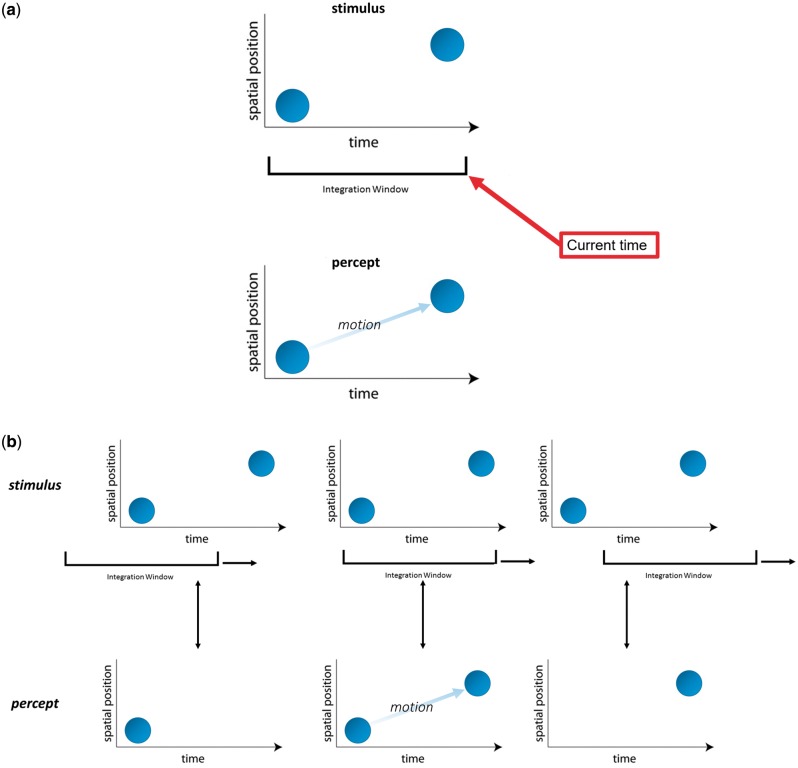Figure 1.
(a) Apparent motion: In apparent motion, two disks are flashed at different positions separated by a blank period (top). We do not perceive two distinct disks but a single moving disk (bottom). Hence, both disks must be integrated before a percept is created. Hence, an integration period is needed spanning at least the duration of the two disks. (b) Sliding windows can explain why we perceive discrete events as continuous, but not the discreteness of perception. In a sliding window account of apparent motion, before the stimulus is presented, a blank screen would be perceived (not shown). Then, the window reaches the first disk, so we would perceive a static disk (left). Next, both disks fall into the integration window, thus activating motion detectors, and we would perceive continuous apparent motion (centre). Finally, only the second disk is in the window and we would perceive a second static disk (right). However, we only perceive one moving disk. Hence, sliding windows can explain why apparent motion appears to be continuous (i.e. discrete events are perceived as continuous) but not why we do not perceive static disks before and after the motion (i.e. perception is discrete).

